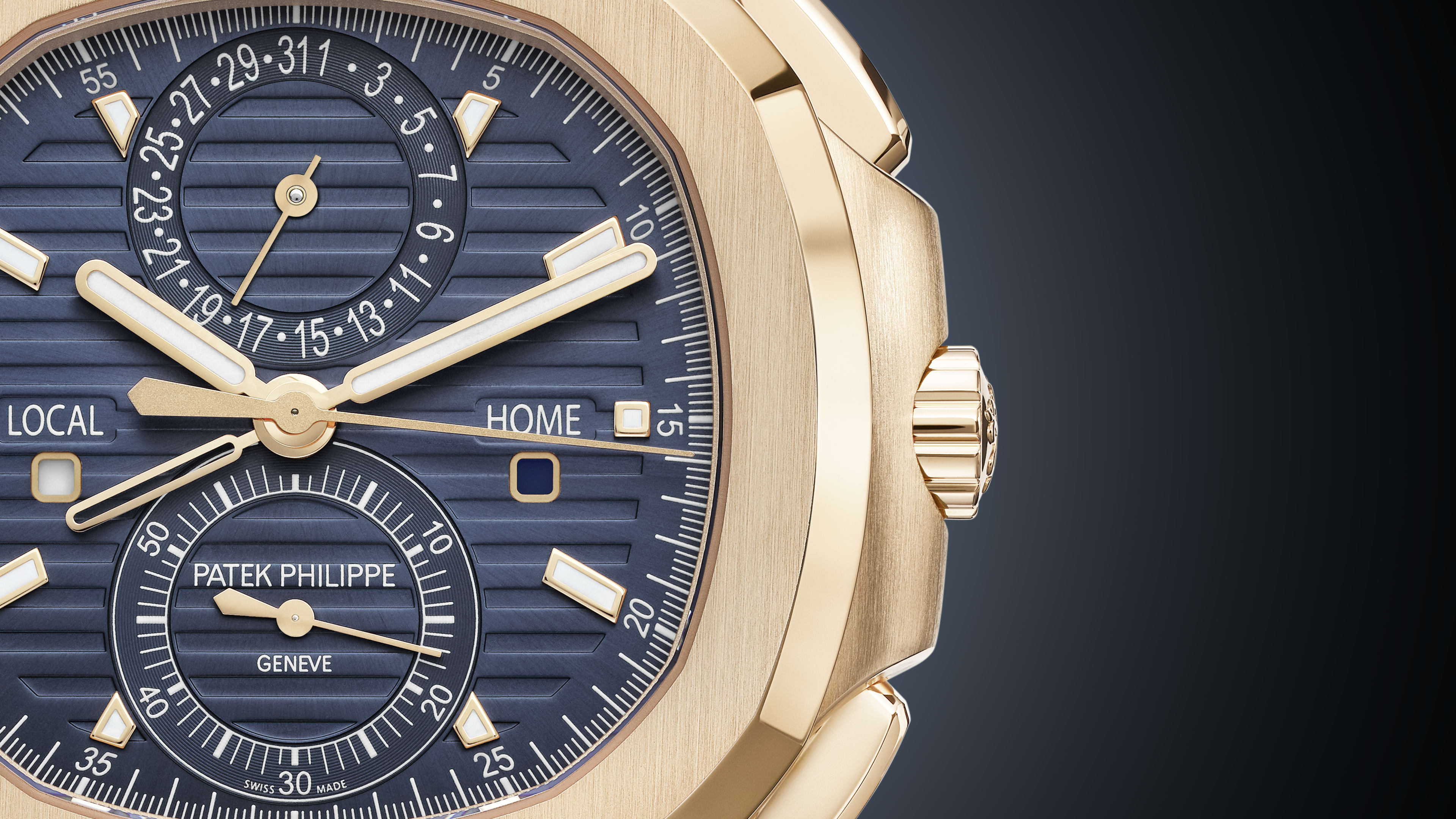Nautilus
5990/1R-001
$132,509

FLYBACK CHRONOGRAPH. TRAVEL TIME.
$132,509
Rose gold. Diameter (10-4 o'clock): 40.5 mm. Thickness: 12.53 mm. Water-resistant to 30m. Screw-down crown. Sapphire crystal case back.
Rose gold. Rose gold fold-over clasp.
CH 28-520 C FUS
Self-winding
Flyback chronograph
Central chronograph hand
60-minute counter
Two time zones: local and home time indication
Day/night indication for local and home time in apertures
Date coupled with local time by hand
Diameter: 31 mm. Thickness: 6.95 mm. Number of parts: 370. Number of jewels: 34. Power reserve: min. 45 hours – max. 55 hours. Winding rotor: 21K gold central rotor. Gyromax®. Frequency: 28,800 semi-oscillations/hour (4 Hz). Balance spring: Spiromax®. Distinctive sign: Patek Philippe Seal.
Explore more